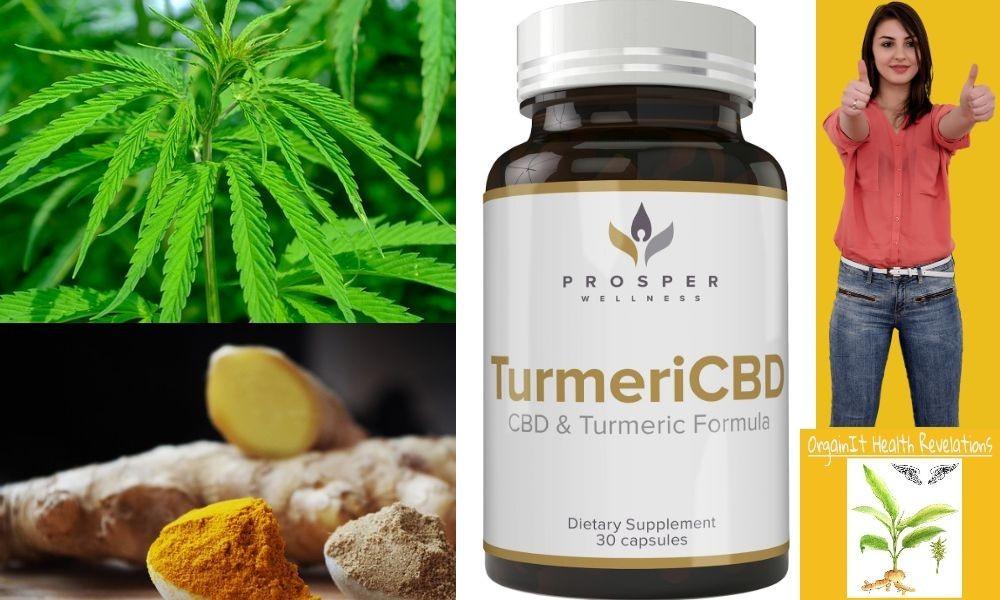Turmeric For Arthritis 2024 Simple Up To Date Honesty
Scientific research suggests that turmeric may offer several health benefits. In the article we will cover the latest in turmeric for arthritis via studies and results. Turmeric contains a compound called curcumin, which has anti-inflammatory properties that may benefit people with rheumatoid arthritis (RA). Research suggests that turmeric and its compounds may be able to reduce inflammation and pain associated with arthritis.
Early Turmeric For Arthritis Research
One of the earlier studies involved 139 people with symptoms of knee osteoarthritis. Of 24 participants, seven reported side effects, including headache, diarrhoea and skin rash. All but one of the people with side effects took more than 4,000 mg of turmeric. Therefore, turmeric extracts and curcumin can be recommended with caution for relieving the symptoms of arthritis, especially osteoarthritis. For one month, they received the NSAID diclofenac (50 mg, twice daily) or curcumin (500 mg, three times daily).

Further high-quality RCT studies with more subjects are needed to confirm the therapeutic efficacy of turmeric for arthritis. However, some studies suggest that both turmeric and its constituents may be helpful in the symptoms of arthritis, including RA. Eating large amounts of turmeric can have side effects. Her symptoms were at least moderately severe and required treatment with a non-steroidal anti-inflammatory drug (NSAID).
Although turmeric and its curcumin-enriched extracts are used to treat arthritis, no systematic review and meta-analysis of randomized clinical trials (RCTs) has been conducted to assess the strength of the research. Due to the lack of strong research evidence, the National Center for Complementary and Integrative Health had originally advised against the use of turmeric supplements for the prevention or treatment of any health condition, including osteoarthritis and rheumatoid arthritis. The aim of this review was to systematically evaluate all randomized clinical trials (RCTs) of turmeric and curcumin for the treatment of arthritis symptoms and to clarify the effectiveness of turmeric in relieving arthritis symptoms. Find out about the possible causes of sudden onset pain without injury, as well as treatment options and when to see a doctor.
There are many causes of right lower back pain, including some that are unique to men or women. These side effects include kidney damage and heart problems. The 107 participants with primary osteoarthritis of the knee were randomly assigned to receive either 2 g of turmeric or 800 mg of ibuprofen (a non-steroidal anti-inflammatory drug) per day for six weeks. Although this meta-analysis of RCTs suggests that oral administration of curcumin reduces osteoarthritis symptoms, as measured by PVAS and WOMAC, as much as painkillers, the limitations of the RCT studies included in this systematic review made it difficult to recommend curcumin and turmeric as good therapeutic agents for arthritis.
A study published in the journal BMC suggests that curcumin, a naturally occurring substance found in a common spice, may help relieve arthritis pain. The studies included in the systematic review used turmeric extracts and their constituents, mainly curcuminoids and, in one study, polysaccharides, which were found to be the primary active ingredient in osteoarthritis.
Various studies on turmeric and arthritis
The authors concluded that the results support the anti-arthritic properties of curcumin and its potential to treat RA. Longa and the synonym domestica) and curcumin for the treatment of arthritis were included in this systematic review. The authors concluded that there is sufficient evidence that daily intake of 1,000 milligrams (mg) of curcumin for a period of 8-12 weeks can relieve pain and inflammation in arthritis, particularly osteoarthritis. After eight weeks, the group taking curcumin alone reported the greatest improvement in symptoms, with no negative gastrointestinal side effects.
There are many, many scientific studies that have investigated turmeric (and curcumin extract) for the treatment of osteoarthritis symptoms. Data from animal studies and small, preliminary studies in patients suggest that curcumin may help relieve osteoarthritis symptoms. Because it is a highly bioavailable supplement, a low dosage of turmeric extract is sufficient to produce clinical benefits. Rheumatoid arthritis is a long-term autoimmune disease that causes inflammation, pain and stiffness in the joints.
Pain, stiffness and physical function were measured using the Western Ontario and McMaster Universities Osteoarthritis Index (WOMAC) after six weeks of treatment with bioavailable turmeric extract in patients with knee OA and compared with paracetamol. In addition, it may relieve some symptoms of rheumatoid arthritis, such as joint swelling and morning stiffness. In a pilot study, 45 people with rheumatoid arthritis took either curcumin, a non-steroidal anti-inflammatory drug (diclofenac sodium) or a combination of both. Other areas of investigation include the effects of curcumin on Crohn’s disease, certain cancers, depression, diabetes, joint pain and irritable bowel syndrome.
Turmeric is a common ingredient in many dishes, including curries, but also has a long tradition in traditional medicine. Further analysis of the full texts led to the exclusion of 8 studies due to missing data and 33 studies that were not RCTs. As a result, treatment for osteoarthritis focuses on relieving pain and swelling, improving joint mobility and stiffness, strengthening joints and minimizing the disabling effects of the disease.
Is turmeric good for arthritis?
Recent studies have found that turmeric, a popular spice in India, can help relieve joint pain. Other research has shown that turmeric extract is as effective as ibuprofen (a type of non-steroidal anti-inflammatory drug) for knee OA pain, but has fewer side effects. Over-the-counter and prescription painkillers can provide relief but are often associated with side effects. A recent analysis of research on turmeric extracts published in the Journal of Medicinal Food concluded that eight to twelve weeks of treatment with standardised turmeric extracts can reduce pain caused by arthritis compared to placebo.
Curcumin has anti-inflammatory properties that make it a potential treatment for a number of health conditions, including reducing pain and improving mobility in people with osteoarthritis. In an early study published in the journal Phytotherapy Research, participants with mild to moderate knee osteoarthritis who took a curcumin supplement showed significant improvements in pain and physical function after six weeks compared to placebo. The spice is popular in Ayurvedic medicine, but is mainly used as a food rather than a medicine in the United States. As part of the Osteoarthritis Clinical Trials Forum Series, thought leaders from around the world discuss the future of treating this disease to improve patient outcomes.
Most productive formulation best for arthritis
This distinction may be less important today, as powerful anti-inflammatory effects in rheumatoid arthritis are now achieved through biologics such as anti-TNF antibodies or methotrexate. Sometimes tests can be helpful to better understand the extent and character of the arthritis affecting a particular joint. Blood tests are done to rule out diseases that can cause secondary osteoarthritis and to rule out other osteoarthritis conditions that can mimic osteoarthritis. Obesity causes osteoarthritis by increasing the mechanical stress on the joint and therefore on the cartilage.

There are many new and promising ways to treat osteoarthritis, relieve pain and improve quality of life. Studies have shown that paracetamol in appropriate doses is often as effective as prescription anti-inflammatory drugs in relieving pain from osteoarthritis of the knee. Cannabinoids and cannabinoid receptors have been studied as potential targets for reducing pain and inflammation associated with osteoarthritis and rheumatoid arthritis. Swimming is particularly well suited to patients with osteoarthritis, as it allows patients to exercise with minimal stress on the joints.
Among the more than 100 different types of osteoarthritis, osteoarthritis is the most common joint disease. For the highest transdermal CBD treatment, a 10% gel formulation was used as the skin area could not be increased accordingly. Osteoarthritis in the fingers and toes can be genetic and occurs in many female members of some families. Researchers at the National Institutes of Health found that taking glucosamine did not significantly improve the symptoms of osteoarthritis compared to placebo.
Each patient should receive a comprehensive assessment and an individualized treatment plan that takes into account age, lifestyle, activity level, other medical problems and support system. Osteoarthritis can lead to creaking (crepitus) of the joint, especially when severe cartilage loss results in a joint that is only bone on bone, with little cartilage cushioning the joint during movement. Repetitive injuries to the joint tissues (ligaments, bone and cartilage) are thought to lead to early osteoarthritis of the knees in football players and military personnel. Today, more than ever, rheumatologists have a range of highly specialised medications to treat all types of osteoarthritis – and change patients’ lives.
It is also important to look at a patient’s whole body, not just the specific joint that hurts. Limb posture scores as an assessment of spontaneous pain were high on day 3 (mean score in all animals with adjuvant-induced monoarthritis). Most treatment plans include a physiotherapy component to improve functionality and movement. In studies, it has been given as a subcutaneous injection and used in patients who had not responded to conventional treatment for osteoarthritis.
For example, if you have pain in your knee, it could be caused by a problem with your back, feet or ankles, as all the bones are connected.



